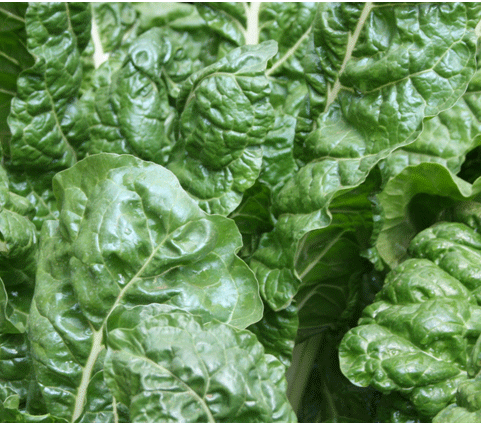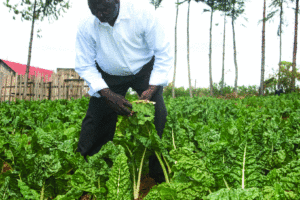
Alluring Spinach farming bring high returns to Gichiria

Spinach vegetables are grown for their succulent edible green leaves. They are relatively easy to grow in cool climates. Spinach are excellent source of vitamin A, Vitamin C, Calcium, magnesium, iron, copper, vitamin B2, vitamin B6 and also a very good source of dietary fiber and phosphorus.
Whether raw in salads or lightly steamed, spinach is a suitable accompaniment to a wide range of dishes.Well, one such place that this vegetables flourish glowingly is Njambini, Nyandarua County in the scenic view of Abedares Mountain at citadels of lush soil and fresh water of river Chania.
Beside capitalizing on the good, cool climate, farmers from the region enjoy proximity to bigger markets such as Nairobi, Thika, Naivasha, Nakuru where they sell their produce hence making the place appropriate for spinach farming. In the outskirts of Njambini town, we meet Joseph Gichiria a passionate spinach farmer. With a broad smile of someone who has money, he attributes part of his earning to the succulent edible green spinach leaves in his farm.
“I am a teacher by profession in a local school in the vicinity thus enabling me monitor my vegetables easily. My wife Lucy Gichiria takes the reins of tending the crops. She has been of enormous help,” Gichiria elucidated.Spinach farming requires a well aerated soil with good drainage and slightly acidic loam soils. The rich fertile soil at his farm is an added advantage since he do not add a lot of manure.
He doesn’t attribute his success to spinach farming only, but to his determination and dexterity which has driven him to grow other crops such as tree tomato, pepino melons among others. “Spinach farming is demanding and thus I have to wake up early to attend to them before heading to school. If I don’t wake up early, I won’t get the desired quality and quantity; thus won’t fetch good prices in the market,” he affirms.
While growing the spinaches in a seedbed, the seedlings take presumably 2-3 weeks to mature. After getting the desirable sets, he uproots them and transfers them to a well prepared land. Holes are dug to around 30cm depth to accomodate the plant taproot. He later adds organic compost or manure into the holes to help provide the necessary nutrients for growth.
Alternatively, he reveals that seeds can also be sowed straight in the dug holes. The seeds should be soaked in water for about 24 hours in order to enhance germination. For seedbed the the seeds are sown thinly in rows. “I usually source for labor from the locals who assist with weeding the weeds as this minimizes competition,” he asserted.
In addition, good agricultural management practices geared towards getting best results are key. He says that pruning is one of the major practices that must be done to the crop otherwise the base leaves will compromise the quality of the top leaves which are the ones desired in the market. Watering, pest and disease management should be done regularly.
It takes 3 months for the crop to be ready for harvesting. His first harvest on a quarter an acre piece of land was 600 bunches which he sold at 25 shillings per bunch garnering 15,000 shillings. This motivated him to expand to an acre. Harvesting can go up to a period of 8 weeks and harvesting ones per week.
“The base green leaves should be harvested first allowing the top ones to mature. They should be cut off carefully to avoid injuring the plant,” Gichiria noted, as he concluded that youths need to get out of their comfort zones and embrace farming as an agri-business.

